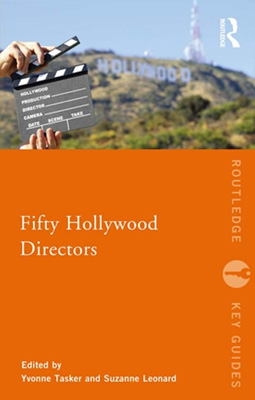Literature Faculty Highlights
Literature Faculty In The News
- Professor Farooz Rather's essay, "Difficult Empathies," came out recently in Public Books. The piece was also highlighted by Literary Hub and listed as a selected read.
- Why the World Needs Simmons: Insights on Contemporary Feminism from Professor Suzanne Leonard
Simmons University News - Workshop 4 | Black Women’s Writing: Experimental Subjectivities
Talk given by Sheldon George at Oxford University, London for his upcoming book, Experimental Subjectivities - "Fatal Attraction" Reboot Reviewed: Giving a Woman a Backstory as a Mentally Ill Murderer Does Not a Feminist Tale Make
By Suzanne Leonard for New REview of Film and Television Studies - Isabella Hammad Interviewed by Assistant Professor Farooz Rather
BOMB Magazine - Professor of Literature and Writing Sheldon George Discusses Innovations of Black Women Writers
Simmons University News - "Literature and the American Dream" An Interview with Farooz Rather
Simmons University News
Faculty Publications
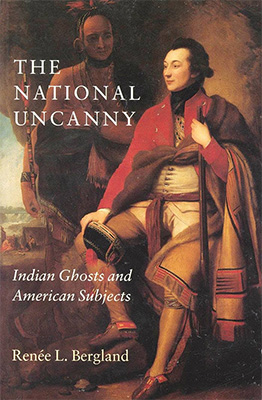 The National Uncanny
The National Uncanny
Indian Ghosts and American Subjects
DISTRIBUTED FOR Dartmouth College Press
Although spectral Indians appear with startling frequency in US literary works, until now the implications of describing them as ghosts have not been thoroughly investigated. In the first years of nationhood, Philip Freneau and Sarah Wentworth Morton peopled their works with Indian phantoms, as did Charles Brocken Brown, Washington Irving, Samuel Woodworth, Lydia Maria Child, James Fenimore Cooper, William Apess, Nathaniel Hawthorne, and others who followed. During the late 19th and early 20th centuries, Native American ghosts figured prominently in speeches attributed to Chief Seattle, Black Elk, and Kicking Bear. Today, Stephen King and Leslie Marmon Silko plot best-selling novels around ghostly Indians and haunted Indian burial grounds. Renée L. Bergland argues that representing Indians as ghosts internalizes them as ghostly figures within the white imagination. Spectralization allows white Americans to construct a concept of American nationhood haunted by Native Americans, in which Indians become sharers in an idealized national imagination. However, the problems of spectralization are clear, since the discourse questions the very nationalism it constructs. Indians who are transformed into ghosts cannot be buried or evaded, and the specter of their forced disappearance haunts the American imagination. Indian ghosts personify national guilt and horror, as well as national pride and pleasure. Bergland tells the story of a terrifying and triumphant American aesthetic that repeatedly transforms horror into glory, national dishonor into national pride.
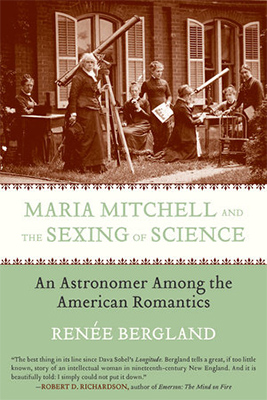 Maria Mitchell And The Sexing Of Science
Maria Mitchell And The Sexing Of Science
An Astronomer among the American Romantics
Author: Renée Bergland
How science closed its doors to women in the nineteenth century, told through the story of an American astronomer who achieved international fame
New England blossomed in the nineteenth century, producing a crop of distinctively American writers along with distinguished philosophers and jurists, abolitionists and scholars. A few of the female stars of this era-Emily Dickinson, Margaret Fuller, and Susan B. Anthony, for instance-are still appreciated, but there are a number of intellectual women whose crucial roles in the philosophical, social, and scientific debates that roiled the era have not been fully examined.
Among them is the astronomer Maria Mitchell. She was raised in isolated but cosmopolitan Nantucket, a place brimming with enthusiasm for intellectual culture and hosting the luminaries of the day, from Ralph Waldo Emerson to Sojourner Truth. Like many island girls, she was encouraged to study the stars. Given the relative dearth of women scientists today, most of us assume that science has always been a masculine domain. But as Renée Bergland reminds us, science and humanities were not seen as separate spheres in the nineteenth century; indeed, before the Civil War, women flourished in science and mathematics, disciplines that were considered less politically threatening and less profitable than the humanities. Mitchell apprenticed with her father, an amateur astronomer; taught herself the higher math of the day; and for years regularly “swept” the clear Nantucket night sky with the telescope in her rooftop observatory.
In 1847, thanks to these diligent sweeps, Mitchell discovered a comet and was catapulted to international fame. Within a few years she was one of America's first professional astronomers; as “computer of Venus“-a sort of human calculator-for the U.S. Navy's Nautical Almanac, she calculated the planet's changing position. After an intellectual tour of Europe that included a winter in Rome with Sophia and Nathaniel Hawthorne, Mitchell was invited to join the founding faculty at Vassar College, where she spent her later years mentoring the next generation of women astronomers. Tragically, opportunities for her students dried up over the next few decades as the increasingly male scientific establishment began to close ranks.
Mitchell protested this cultural shift in vain. “The woman who has peculiar gifts has a definite line marked out for her,” she wrote, “and the call from God to do his work in the field of scientific investigation may be as imperative as that which calls the missionary into the moral field or the mother into the family... The question whether women have the capacity for original investigation in science is simply idle until equal opportunity is given them.” In this compulsively readable biography, Renee Bergland chronicles the ideological, academic, and economic changes that led to the original sexing of science-now so familiar that most of us have never known it any other way.
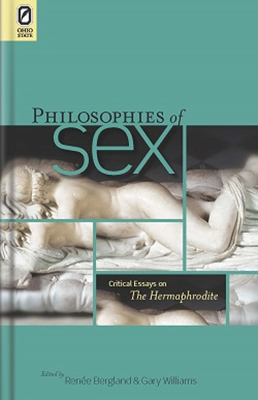 Philosophies of Sex<
Philosophies of Sex<
CRITICAL ESSAYS ON THE HERMAPHRODITE
EDITED BY Renée BERGLAND AND GARY WILLIAMS
Philosophies of Sex: Critical Essays on The Hermaphrodite is the first collection of critical studies of Julia Ward Howe's long-secret novel that, since its initial publication in 2004, has caused a seismic shift in how we understand gender awareness and sexuality in antebellum America. Howe figures in the history of the nineteenth-century American literature primarily as a poet, most famous for having written the lyrics to “Battle Hymn of the Republic.” Renée Bergland and Gary Williams have assembled a luminous array of essays by eminent scholars of the nineteenth-century American literature, providing fascinating—and widely differing—contexts in which to understand Howe's venture into territory altogether foreign to American writers in her day.
An introduction by Bergland and Williams traces the (re)discovery of Howe's manuscript and the beginnings of commentary as word spread about this remarkable text. Mary Grant, an early reader, invokes the excitement and frontier spirit of women's history in the 1970s. Marianne Noble and Laura Saltz place the narrative within the frames of European and American Romanticism and of Howe's other writings. Betsy Klimasmith, Williams, Bethany Schneider, and Joyce Warren explore connections between Howe's novel and other ground-breaking nineteenth-century works on gender, sexuality, and relationship. Bergland and Suzanne Ashworth explore The Hermaphrodite's suggestive invocations of two other kinds of “texts”: sculpture and theology.
Forthcoming from Princeton University Press:
Natural Magic
Emily Dickinson, Charles Darwin, and the Dawn of Modern Science
Renée Bergland
A captivating portrait of the poet and the scientist who shared an enchanted view of nature
Emily Dickinson and Charles Darwin were born at a time when the science of studying the natural world was known as natural philosophy, a pastime for poets, priests, and schoolgirls. The world began to change in the 1830s, while Darwin was exploring the Pacific aboard the Beagle and Dickinson was a student in Amherst, Massachusetts. Poetry and science started to grow apart, and modern thinkers challenged the old orthodoxies, offering thrilling new perspectives that suddenly felt radical—and too dangerous for women.
Natural Magic intertwines the stories of these two luminary nineteenth-century minds whose thought and writings captured the awesome possibilities of the new sciences and at the same time strove to preserve the magic of nature. Just as Darwin's work was informed by his roots in natural philosophy and his belief in the interconnectedness of all life, Dickinson's poetry was shaped by her education in botany, astronomy, and chemistry, and by her fascination with the enchanting possibilities of Darwinian science. Casting their two very different careers in an entirely fresh light, Renée Bergland brings to life a time when ideas about science were rapidly evolving, reshaped by poets, scientists, philosophers, and theologians alike, painting a colorful portrait of the remarkable century that transformed how we see the natural world.
Illuminating and insightful, Natural Magic explores how Dickinson and Darwin refused to accept the separation of art and science. Today, more than ever, we need to reclaim their shared sense of ecological wonder.
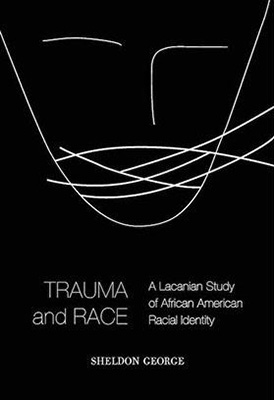 Trauma and Race
Trauma and Race
African American identity is racialized. And this racialized identity has animated and shaped political resistance to racism. Hidden, though, are the psychological implications of rooting identity in race, especially because American history is inseparable from the trauma of slavery.
In Trauma and Race author Sheldon George begins with the fact that African American racial identity is shaped by factors both historical and psychical. Employing the work of Jacques Lacan, George demonstrates how slavery is a psychic event repeated through the agencies of racism and inscribed in racial identity itself. The trauma of this past confronts the psychic lack that African American racial identity both conceals and traumatically unveils for the African American subject.
Trauma and Race investigates the vexed, ambivalent attachment of African Americans to their racial identity, exploring the ways in which such attachment is driven by traumatic, psychical urgencies that often compound or even exceed the political exigencies called forth by racism.
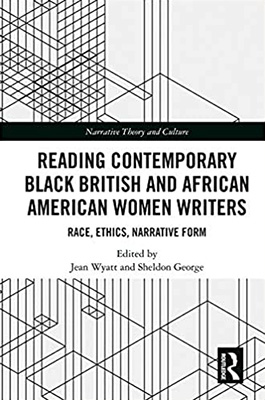 Reading Contemporary Black British and African American Women Writers: Race, Ethics, Narrative Form
Reading Contemporary Black British and African American Women Writers: Race, Ethics, Narrative Form
Reading Contemporary Black British and African American Women Writers: Race, Ethics, Narrative Form brings together British and American scholars to explore how, in texts by contemporary black women writers in the U. S. and Britain, formal narrative techniques express new understandings of race or stimulate ethical thinking about race in a reader.
Taken together, the essays demonstrate that black women writers from both sides of the Atlantic borrow formal structures and literary techniques from one another to describe the workings of structural racism in the daily lives of black subjects and to provoke readers to think anew about race.
Narratology has only recently begun to use race as a category of narrative theory. This collection seeks both to show the ethical effects of narrative form on individual readers and to foster reconceptualizations of narrative theory that account for the workings of race within literature and culture.
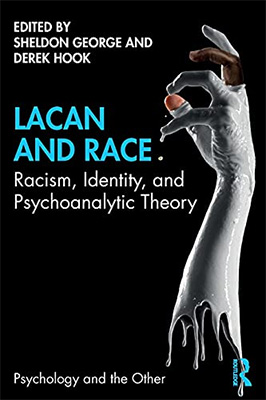 Lacan and Race
Lacan and Race
This edited volume draws upon Lacanian psychoanalytic theory to examine the conscious and unconscious forces underlying race as a social formation, conceptualizing race, racial identity, and racism in ways that go beyond traditional modes of psychoanalytic thought.
Featuring contributions by Lacanian scholars from diverse geographical and disciplinary contexts, chapters span a wide breadth of topics, including white nationalism and contemporary debates over confederate monuments; emergent theories of race rooted in Afropessimism and postcolonialism; analyses of racism in apartheid and American slavery; clinical reflections on Latinx and other racialized patients; and applications of Lacan's concepts of the lamella, drive and sexuation to processes of racialization. The collection both reorients readers' understandings of race through its deployment of Lacanian theory and redefines the Lacanian subject through its theorizing of subjectivity in relation to race, racism and racial identification.
Lacan and Race will be a definitive text for psychoanalytic theorists and contemporary scholars of race, appealing to readers across the fields of psychology, cultural studies, humanities, politics, and sociology.
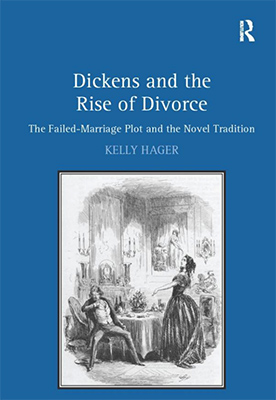 Dickens and the Rise of Divorce
Dickens and the Rise of Divorce
Questioning a literary history that, since Ian Watt's Rise of the Novel, has privileged the courtship plot, Kelly Hager proposes an equally powerful but overlooked narrative focusing on the failed marriage. Hager maps the legal history of marriage and divorce, providing crucial background as she reveals the prevalence of the failed-marriage plot in eighteenth- and nineteenth-century British novels. Dickens's novels emerge as representative case studies in their preoccupations with the disintegration of marriage, the far-reaching and disastrous effects of the doctrine of coverture, and the comic, spectacular, and monstrous possibilities afforded by the failed-marriage plot. Setting his narratives alongside the writings of liberal reformers like John Stuart Mill and the seemingly conservative agendas of Caroline Norton, Eliza Lynn Linton, and Sarah Stickney Ellis, Hager also offers a more contextualized account of the competing strands of the Woman Question. In the course of her revisionist readings of Dickens's novels, Hager uncovers a Dickens who is neither the conservative agent of the patriarchy nor a novelistic Jeremy Bentham, and reveals that tipping the marriage plot on its head forces us to adjust our understanding of the complexities of Victorian proto-feminism.
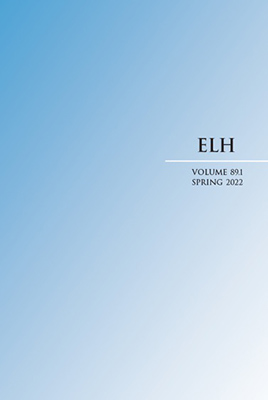 How Many Siblings Had Philip Pirrip?
How Many Siblings Had Philip Pirrip?
Counting Brothers and Sisters in the Victorian Novel
Karen Bourrier, Kelly Hager
ELH, Volume 89, Number 1, Spring 2022, pp. 159-184 (Article)
In this paper, following a midrange methodology that combines insights from narrative theory with human and machine reading, we gather data from fifty domestic realist novels. We find that while the average mid-Victorian family hovered just below six children, the average family in the Victorian novel has 2.8 children, and more than a third are only children. Novelists responded to the demands of the narrative when constructing their sibling sets: certain quantities and gender configurations of siblings are wrought from formal necessity. We identify several patterns stemming from our data in the composition of the novelistic Victorian sibling set, including orphans, heiresses, brother-sister pairings, and the long family as a joke. We find that the Victorian novel's focus on lineage leads novelists to prune the long families of history quite aggressively, representing them vaguely if at all. We conclude by offering our methodology, which relies on a combination of minimal computing and close reading, as an example and provocation to scholars seeking to embark on more empirical projects, and to see familiar texts anew.
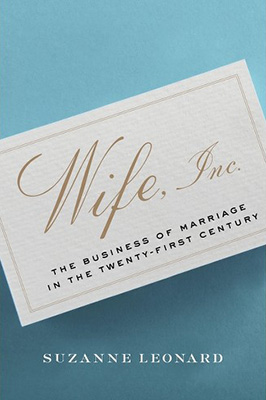 Wife, Inc.
Wife, Inc.
After a half century of battling for gender equality, women have been freed from the necessity of securing a husband for economic stability, sexual fulfillment, or procreation. Marriage is a choice, and increasingly women (and men) are opting out. Yet despite these changes, the cultural power of marriage has burgeoned. What was once an obligation has become an exclusive club into which heterosexual women with the right amount of self-discipline may win entry. The newly exalted professionalized wife is no longer reliant on her husband's status or money; instead she can wield her own power provided she can successfully manage the business of being a wife.
Wife, Inc. tells a fiercely contemporary story revealing that today's wives do not labor in kitchens or even homes. Instead, the work of wifedom occurs in online dating sites, on reality television, in social media, and on the campaign trail. Dating, marital commitment, and married life have been reconfigured. No longer the stuff of marriage vows, these realms are now controlled by brand management and marketability. To prosper, women must appear confident, empowered, and sexually savvy.
Guiding readers through the stages of the “wife-cycle,” Suzanne Leonard follows women as they date, prepare to wed, and toil as wives, using examples from popular television, film, and literature, as well as mass market news, women's magazines, new media, and advice culture. The first major study to focus on this new definition of “working wives,” Wife, Inc. reveals how marriage occupies a newly professionalized role in the lives of American women. Being a wife is a business that takes a lot more than a vow to maintain—this book tells that story.
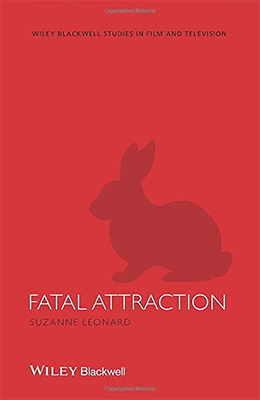 Fatal Attraction
Fatal Attraction
Since its famed introduction of the “boiled bunny,” Fatal Attraction (1987) established itself as one of American cinema's most controversial films. This insightful new book surveys the film's formal features and its ideological impact, paying special attention to the film's signature mix of sexuality, fear, and family values.
- Features detailed breakdowns of the formal techniques the film employs to create suspense, such as turning ordinary household objects into agents of terror
- Considers the film's mixed-genre status as a thriller, melodrama, horror picture, and film noir
- Offers an explanation and analysis of the cultural storm ignited by the film, especially due to its treatment of single career women
- Investigates the film's handling of extramarital sexuality, pregnancy, birth control, and AIDS
- Discusses the film's lasting role in shaping American gender politics
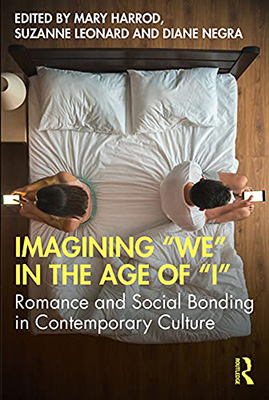 Imagining "We" in the Age of "I"
Imagining "We" in the Age of "I"
Romance and Social Bonding in Contemporary Culture
Winner, MeCCSA Edited Collection of the Year, MeCCSA Outstanding Achievement Awards 2022
In the early twenty-first century shifts in gender and sexuality, work and mobility patterns and especially technology have provoked interest in perceived threats to social bonding on a global scale. This edited collection explores the fracturing of couple culture but also its persistence.
Looking at a variety of media sites—including film, television, popular print fiction, new media and new technologies—this volume's diverse range of contributors examine how mediated scenes of intimacy proliferate, while real-life experiences are cast in a newly uncertain light. The collection thus challenges a latent but growing tendency towards perceptions of romantic decline, in a variety of cultural contexts and with attention to the impact of COVID-19.
This is an accessible and timely collection suitable for scholars in gender studies, media, cultural studies and communication studies.
Fifty Hollywood Directors introduces the most important, iconic and influential filmmakers who worked in Hollywood between the end of the silent period and the birth of the blockbuster. By exploring the historical, cultural and technological contexts in which each director was working, this book traces the formative period in commercial cinema when directors went from pioneers to industry heavyweights.
Each entry discusses a director's practices and body of work and features a brief biography and suggestions for further reading. Entries include:
- Frank Capra
- Cecil B DeMille
- John Ford
- Alfred Hitchcock
- Fritz Lang
- Orson Welles
- DW Griffith
- King Vidor
This is an indispensable guide for anyone interested in film history, Hollywood and the development of the role of the director.
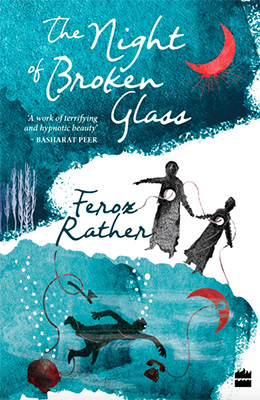 The Night of Broken Glass
The Night of Broken Glass
by Feroz Rather
Over the last three decades, Kashmir has been ravaged by insurgency. While reams have been written on it – in human rights documents, academic theses, non-fiction accounts of the turmoil, and government and military reports – the effects of the violence on its inhabitants have rarely been rendered in fiction. Feroz Rather's The Night of Broken Glass corrects that anomaly. Through a series of interconnected stories, within which the same characters move in and out, the author weaves a tapestry of the horror Kashmir has come to represent. His visceral imagery explores the psychological impact of the turmoil on its natives – Showkat, who is made to wipe off graffiti on the wall of his shop with his tongue; Rosy, a progressive, jeans-wearing ‘upper-caste' girl who is in love with ‘lower-caste' Jamshid; Jamshid's father Gulam, a cobbler by profession who never finds his son's bullet-riddled body; the ineffectual Nadim ‘Pasture', who proclaims himself a full-fledged rebel; even the barbaric and tyrannical Major S, who has to contend with his own nightmares. Grappling with a society brutalized by the oppression of the state, and fissured by the tensions of caste and gender, Feroz Rather's remarkable debut is as much a paean to the beauty of Kashmir and the courage of its people as it is a dirge to a paradise lost.
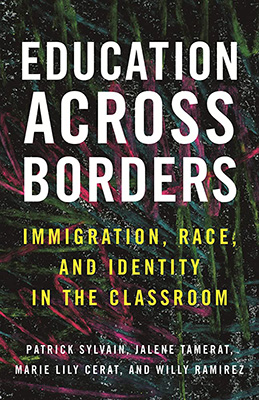 Education Across Borders
Education Across Borders
Immigration, Race, and Identity in the Classroom
Patrick Sylvain (Author); Jalene Tamerat (Author); Marie Lily Cerat (Author)
The practices and values in the US educational system position linguistically, culturally, and socioeconomically diverse children and families at a disadvantage. BIPOC dropout rates and levels of stress and anxiety have linked with non-inclusive school environments. In this collection, three educators tell of and will draw on their experiences as immigrants and educators to address racial inequity in the classroom and provide a thorough analysis of different strategies that create an inclusive classroom environment. White educators that serve BIPOC students will benefit from these reflections on incorporating culturally relevant pedagogies that value the diverse experiences of their students.
With a focus on Haitian and Dominican students in the US, the authors will reveal the challenges that immigrant and first-generation students face. They’ll also offer insights about topics such as:
- How do language policies and social justice intersect?
- How can educators use culturally relevant teaching and community funds of knowledge to enrich school curriculum?
- How can educators center the needs of the student within the classroom?
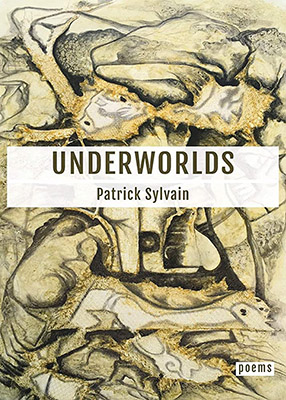 Underworlds
Underworlds
by Patrick Sylvain
In his debut English language collection, Patrick Sylvain brings forth an excavation of historical significance. In this magnificent chapbook of poems, Sylvain takes the reader on a contemporary exploration of Caribbean & Haitian histories marred by man-made and natural disasters. From the undertow of the Atlantic Ocean to the rubbles of a catastrophic earthquake, each poem is a relic, bellowing “ancestral tongues” in an attempt to “un-scab the past.” This is a book for all generations.

